–
As the United States emerged from the Civil War, freed and former slaves entered a world with new opportunities and limitations alike. The experiences of famous African American cowboys, and those of lesser-known status, highlight the diversity of the Wild West.
As hard-working cowhands, well-respected lawmen, and troublesome outlaws, African Americans on the frontier shaped the development of the American West. Men like Bass Reeves, Bill Pickett, and Nat Love found adventure and excitement out west, and they also experienced levels of independence and notoriety unknown to their counterparts in other parts of the developing nation.
Former Slaves Had All Of The Skills Needed To Be Cowhands
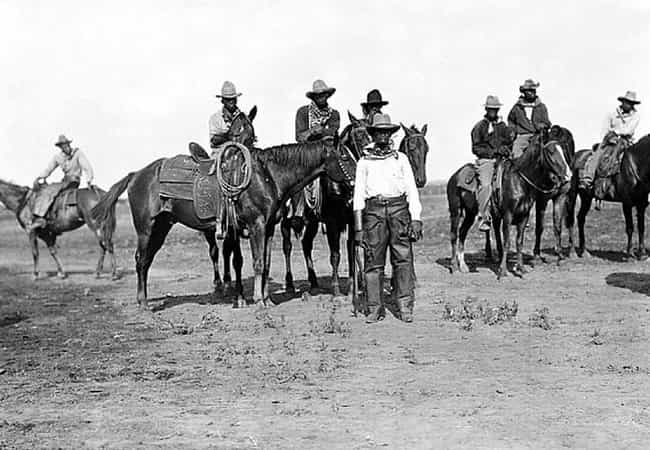
Slaves were initially brought West by wealthy settlers to work on ranches and plantations. As the cattle and cotton demand grew, the number of enslaved people in places like Texas grew exponentially. In 1836, there were about 5,000 enslaved people in Texas. By 1860, there were more than 180,000.
Slaves who worked on ranches wrangled cattle, broke horses, and went on long cattle drives, developing skills that were essential on the frontier. Charlie Willis was born to enslaved parents in 1847 in Texas, and spent his youth in servitude in Milam, TX. He was 18 when the Civil War ended and once free, earned a reputation as one of the best cowhands and horse-breakers in Texas.
Most African American Cowboys Grew Up Enslaved
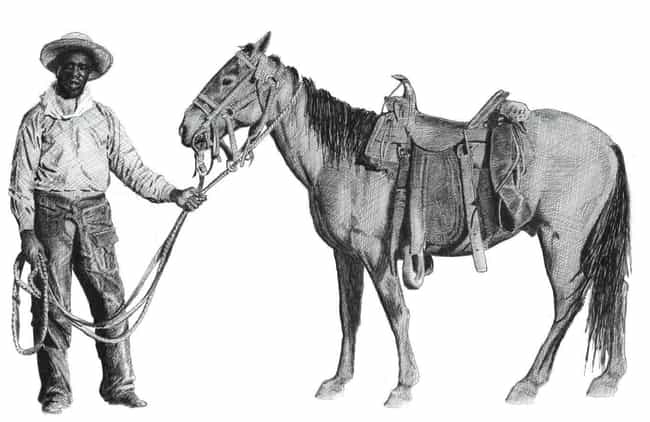
As white settlers made their way into Texas, they took with them enslaved people to work on vast swaths of land full of wandering cattle. George McJunkin, for example, was born to enslaved parents in Midland, TX in 1851. His blacksmith father was saving up money to purchase the family’s freedom when, in 1865, he learned slaves had been emancipated.
McJunkin became a cowboy in 1868, buying his first pair of cowboy boots in anticipation of working as a cattle wrangler. Over time, he learned roping skills and became known for his ability to wrangle horses. He grew into a well-respected ranch foreman in New Mexico where he discovered the Folsom Ice Age bones in 1908, which decades later provided evidence of a human presence in the Americas as early as the Pleistocene epoch.
Nat Love, expert cowboy and rodeo man who came to be known as “Deadwood Dick,” recalled his youth as a slave in Tennessee where his father was a plantation foreman. Love was ten years old when the Civil War broke out and remembered attempts to play out the war with his friends.
According to Love, “Not one of the boys wanted to be a rebel,” so they waged war against a nest of yellow jackets instead. He noted that while there were no casualties, many young men were injured.
African American Men Found Opportunities For New Lives By Migrating To Rural Areas
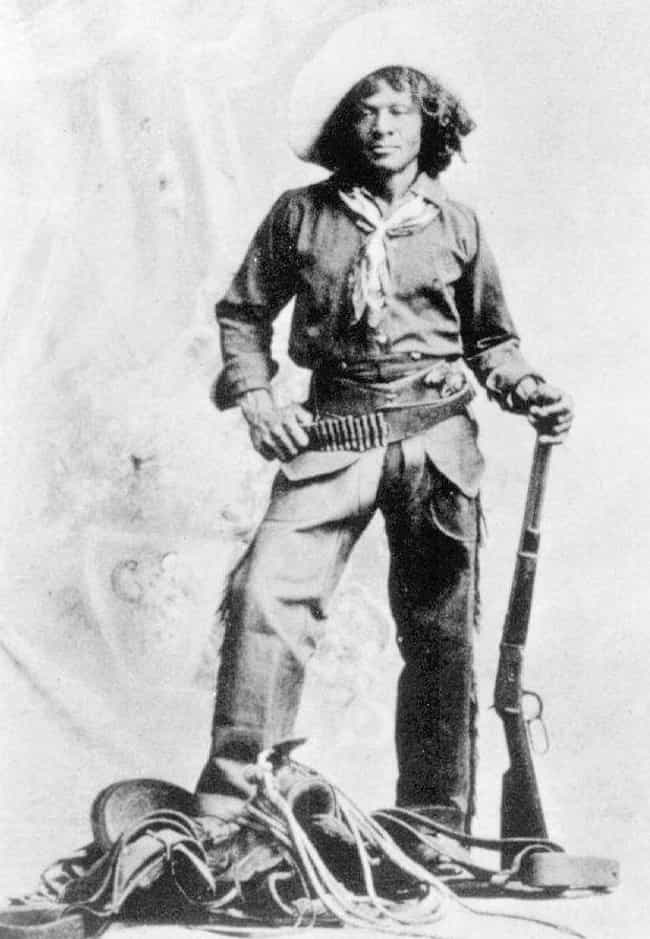
Prior to the end of the Civil War, freed and fugitive Black folks took low-paying jobs in the North, where they faced discrimination and were often undermined by whites. Earning a living after the Civil War was even more difficult for former slaves.
Ex enslaved people’s choices for work were incredibly limited, especially in the South. Freed slaves could become wage earners for their former owners or they could work menial service jobs.
The desire for a new life propelled a mass exodus from the South, with many former slaves heading to places like Kansas and Texas, where being a cowboy was yet another option. Nat Love went west in 1869, and he was soon followed by thousands of others in search of a new opportunities. Freed slaves who were already in states like Texas stayed on to work as professional cowhands.
African American cowboy George Martin recalled when his father moved the family to Texas in 1865. According to Martin, his father, “labored at any kind of work he could get to do when we first lit in Dallas. The Civil War sort of tore things up for father back in Atlanta, so he came to Texas calculating on getting a new start. Soon as I was able to go on my own, I lit out to find a job and dragged up to Denton County, which contained a tolerable lot of small cattle ranches back in those days.”
African American Women Were Cowhands Out West, Too

African American women were active on the American Frontier, but little has been done to study their activities. Mary Fields, for example, was known for her skill with a gun, something that ultimately cost her a job with the Montana nuns for whom she hauled freight. She drank, smoked cigars, and later delivered mail, but never worked on a ranch.
Johana July, a Black Seminole woman, worked on a ranch in Texas, having learned the skills of a vaquero from her father. She raised livestock and broke horses throughout her life, navigating through three marriages and four children while maintaining close connections with her extended family.
Former Slaves Were Paid For What They’d Previously Been Forced To Do

Like how freed slaves became wage laborers in the post-war Deep South, former slaves on ranches in the American West got paid for their efforts. The rate of pay varied by skill and location, with permanent hands like Rufus Powell earning $15 a month and day laborers making $.69 each day during the 1890s.
The chance for Black cowboys to make money only accelerated as ranches became larger. Men like Bob Jones went from slave to cattle owner within three years of emancipation, later investing in farming and expanding into other businesses.
Surviving On The Frontier Didn’t Involve Color
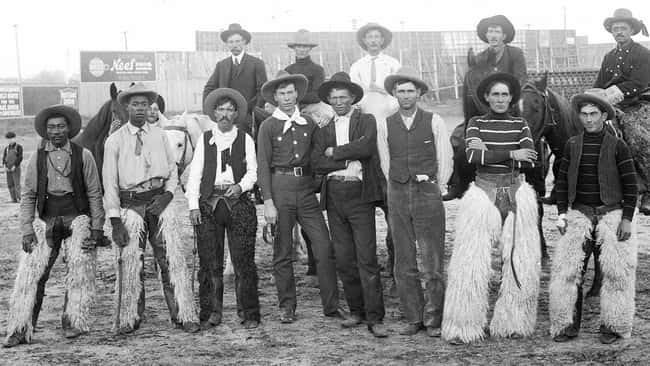
African Americans made up roughly one-fourth of the cowboy population in the Old West era. Most trail groups included Black cowboys and some were entirely African American. On the trail, it didn’t matter what color a man was if a stampede struck or if some other hardship hit the group.
Blacks were often hired to do the hardest tasks like breaking the most difficult horses. The strength and acumen Black cowboys showed not only earned them respect on the ranch and on the trail, but also built up the sense of egalitarianism. The remote, all-male groups survived rather than competed with one another and as a result, there was generally less discrimination against African Americans in cowboy communities.
In Towns, African American Cowboys Walked A Line Of Acceptance And Exclusion
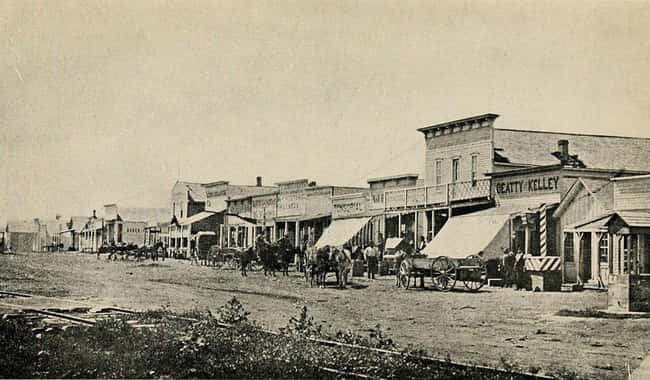
When a group of cowboys arrived at a town or city along a cattle drive, Black cowboys were met with varying degrees of warmth. In towns like Dodge City, African American cowboys could enjoy the town, albeit in different establishments than their white counterparts.
Black cowboys were treated better than Black residents of towns and cities as well, although this may have been due to the economic contributions they made more than any sense of equality.
Generally, they escaped incidents of violence commonly experienced by African Americans in cities and communities in the American North and South. Whites and Blacks may have fought, particularly on the trail, but Blacks probably knew to avoid altercations. Many Blacks faced pranks and were given hateful nicknames like “Ni**er Bob” and “Ni**er Newt” but as long as they didn’t take it too seriously, no trouble arose.
African American Cowboys Became Famous Performers
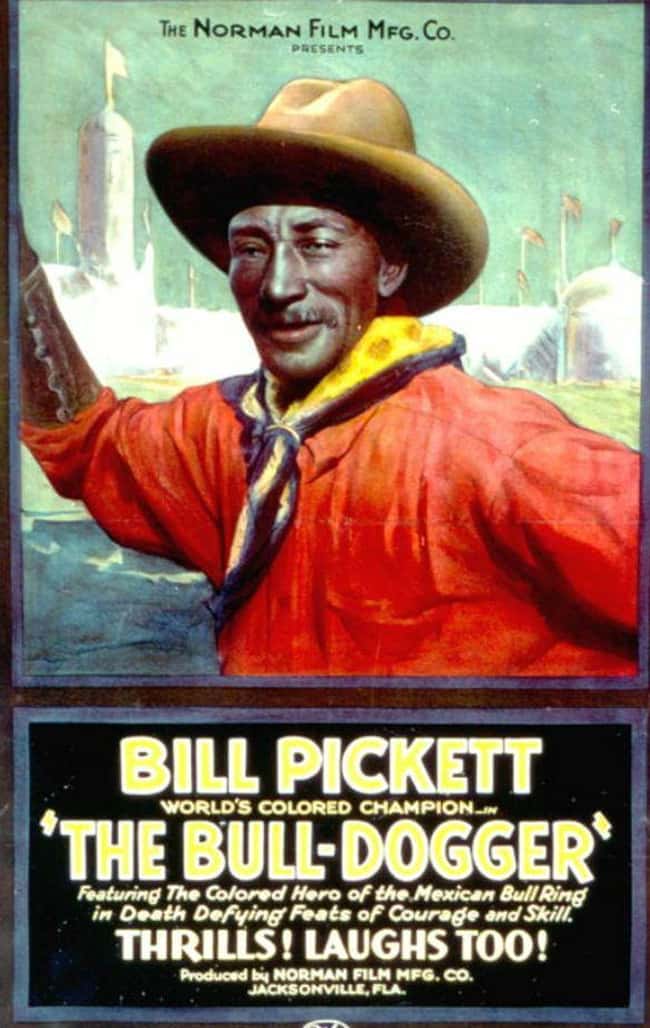
Born in 1871 (or late 1870), Bill Pickett grew up in Texas, the son of American Indian and Black parents. He worked as a cowboy on a ranch in southwest Texas, learning to rope and ride with such flair that he attracted the attention of a Wild West show touring through the area.
Pickett became known for handling wild animals, inventing bulldogging (or steer wrestling), and introducing it to the show. Pickett’s unique style of bulldogging included riding alongside a steer, grabbing its head, and biting its upper lip to force it into submission.
When he became a rodeo performer, Pickett faced racism of all kinds from rodeo owners and fellow riders. A crowd-pleaser, he became extremely successful, even performing for the King and Queen of England in 1914.
When he wasn’t performing, Pickett returned to ranching and worked as a cowhand. He also appeared in a couple of silent movies before his death due to a kick from a horse in 1932. He was inducted into the Pro Rodeo Hall Of Fame in 1989.
Camaraderie Was Strong Among Cowboy Groups
One of the things Nat Love found most rewarding on the cattle trail was the sense of camaraderie he experienced. According to Love:
A braver, truer set of men never lived than these wild sons of the plains whose home was in the saddle and their couch, mother earth, with the sky for a covering. They were always ready to share their blanket and their last ration with a less fortunate fellow companion and always assisted each other in the many trying situations that were continually coming up in a cowboy’s life.
Adding to the sense of freedom and fellowship, African American cowboys earned the same wages as white and Mexican cowboys. They ate the same food, worked in the same conditions, and worked together as a group.
Cowboy Outlaws Were Just As Likely To Be Black
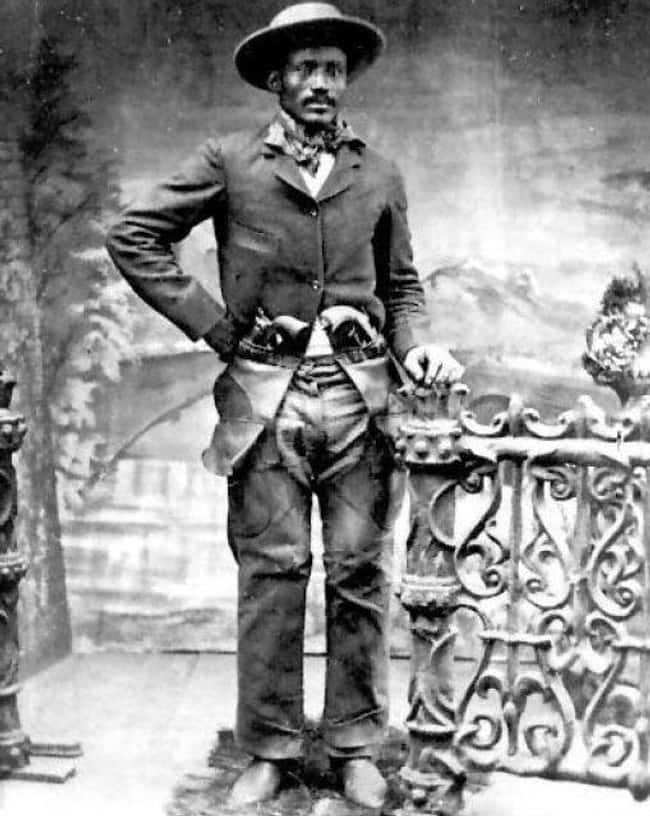
Late nineteenth century African American outlaws were similar to their white counterparts, stealing cattle, taking on aliases, and boasting about their criminal activities. Outlaws like John B. Hayes, also known as “The Texas Kid,” shot out the lights at saloons with “Whites Only” signs, while George Lane and Isom Dart found large-scale community support.
Taking on a bit of a Robin Hood-like image, Black cowboys were often seen to take on injustice while carrying out their criminal acts.
Crawford “Cherokee Bill” Goldsby, an outlaw in Native American Territory with African, Native American, and White heritage, joined up with Bill Cook and his gang in 1894. After Goldsby and Cook gathered a group of mostly Black and Native American associates, they wreaked havoc on Oklahoma before being caught in early 1895. Goldsby was hanged for murder in March 1896.
African American Lawmen Tracked Down The Worst Of The Worst
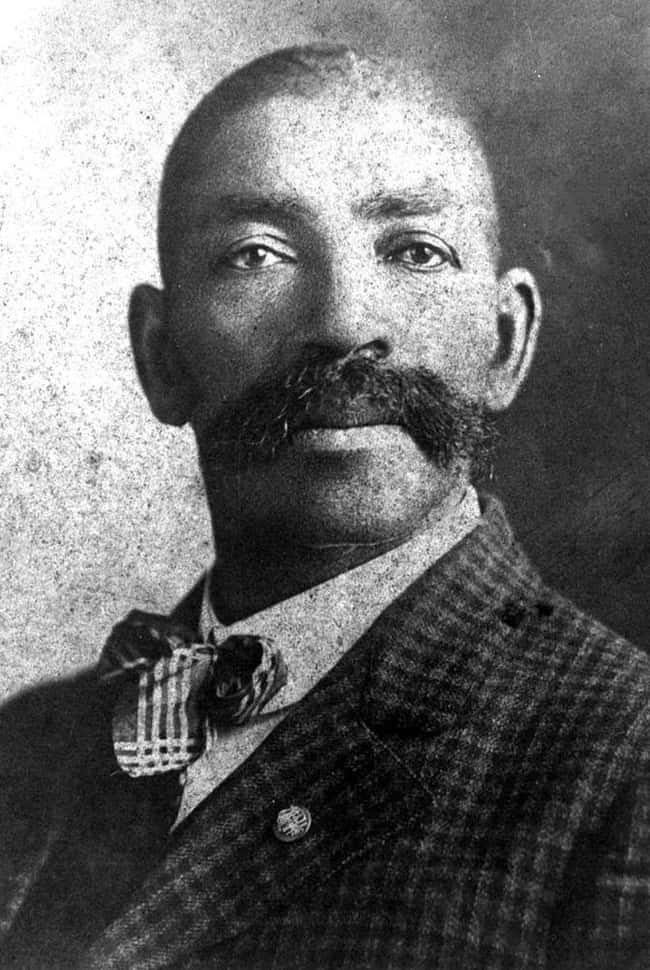
With the growing need for lawmen on the frontier, African Americans became law enforcement officials in towns and cities throughout the West.
Bass Reeves was born into slavery in Arkansas and grew up enslaved in Texas. During the Civil War, Reeves allegedly got into a fight with his owner and fled to Native American Territory where he hid until freed by the Emancipation Proclamation in 1863.
Once free, Reeves settled down as a rancher in Arkansas where he served as a guide to US officials traveling through Native Territory In 1875, Judge Isaac Parker even commissioned him to be a deputy federal marshal.
As a deputy marshal, Reeves served warrants, hunted down outlaws, and even took on disguises to trick criminals into custody. He went to Texas in 1889 and Oklahoma in 1907. According to accounts, Reeves killed 14 outlaws and captured more than 3,000.
White Cowboys Praised Their Black Counterparts
On numerous occasions, Nat Love recalled the praise he and his fellow cowhand received after bringing in herds. White cowboys were not opposed to giving their Black colleagues credit for hard work and many developed lifelong friendships based in admiration and respect.
When George Adams died in 1939, the 95-year old Black cowboy was buried next to his former boss C.F. Cox Sr. in the white cemetery in Sanderson, TX. Cox had requested before his death two years earlier that Adams be buried alongside him because Adams was so “well respected and well liked.”
Adams’s background was unknown, but he was believed to have been a former slave. During his time as a ranch hand, Adams broke a horse that was so defiant it jumped off a cliff to free itself from the cowboys who tried to break it.
Similar esteem can be found in rancher Charles Goodnight’s comments on Bose Ikard, a Black cowboy who worked with Goodnight for four years. Goodnight, his partner Oliver Loving, and Ikard all inspired characters in Larry McMurty’s Lonesome Dove novel-turned-TV mini-series.
Goodnight noted Ikard, “surpassed any man I had in endurance and stamina. There was dignity, cleanliness, and reliability about him that was wonderful…Bose could be trusted further than any living man I know.”
The Need For African American Cowhands Declined In The Early 20th Century
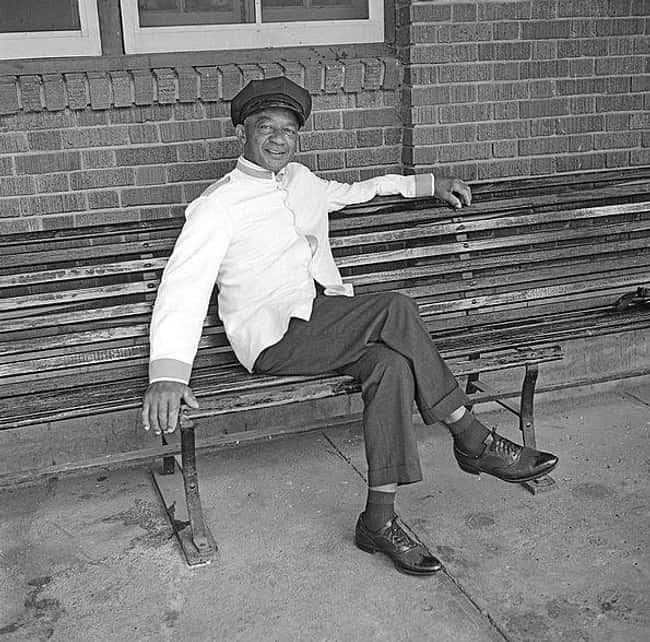
The introduction of barbed wire shifted the position of cowboys in the American West, particularly for African Americans. Barbed wire could keep cattle more contained, necessitating fewer cowhands and decreasing the demand for African American workers. The growth of railroads and removal of Native Americans also altered the cattle industry and lowered the need for cowboys.
By the early 20th century, African American cowhands had to find new ways to make a living. Many, like Nat Love, went to work for the railroads:
To us wild cowboys of the range, used to the wild and unrestricted life of the boundless plains, the new order of things did not appeal, and many of us became disgusted and quit the wild life for the pursuits of our more civilized brother. I was among that number and in 1890 I bid farewell to the life which I had followed for over twenty years.
Others stuck to performing, entertaining audiences with lasso and cattle-wrangling tricks. The decline of the cowboy was further impacted by privatization during the mid-20th century. Today, African American cowboys still participate in rodeos but the overall decline of cowboys continues.









